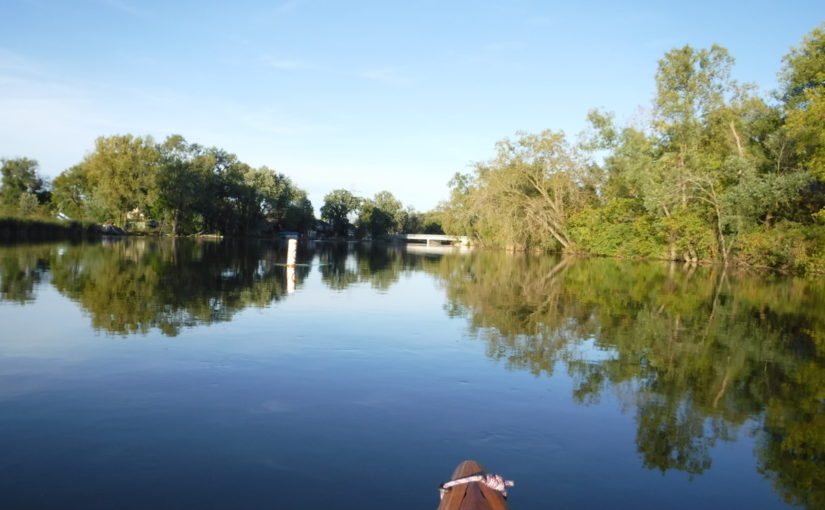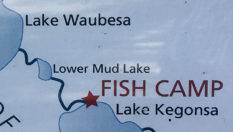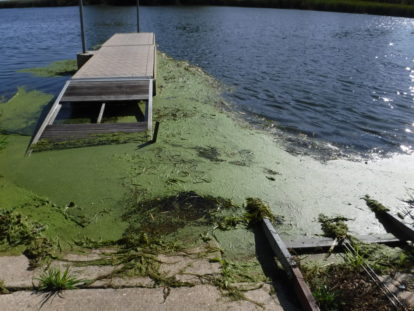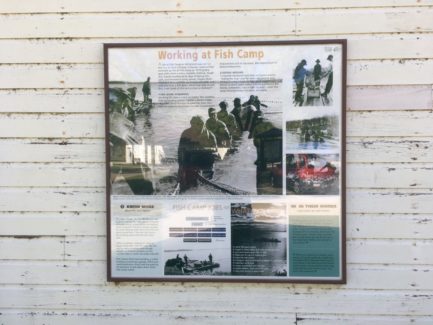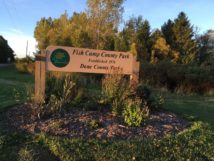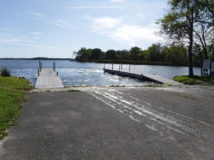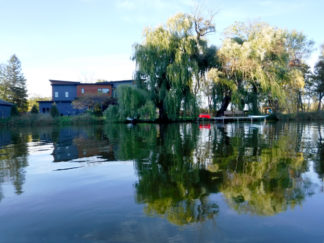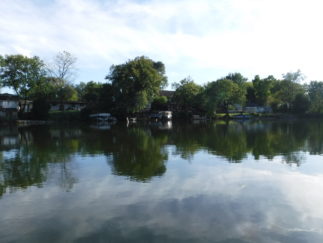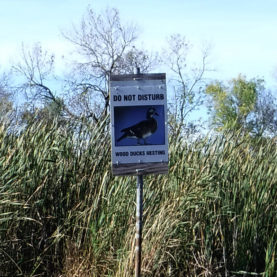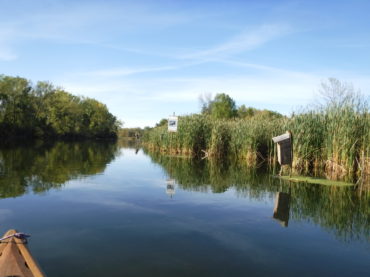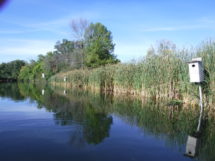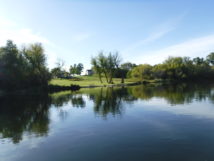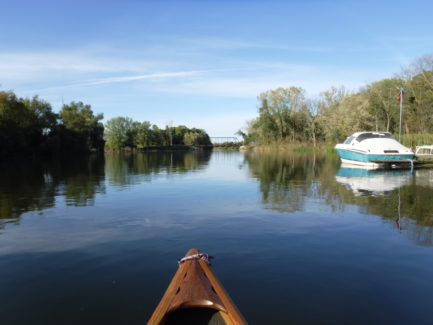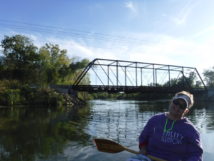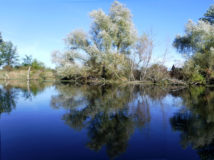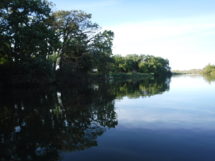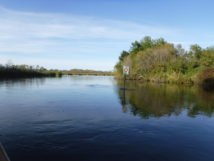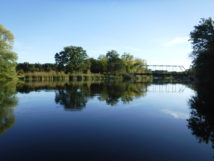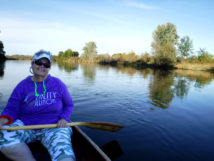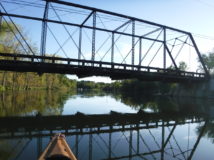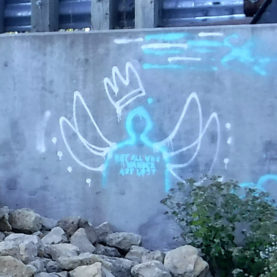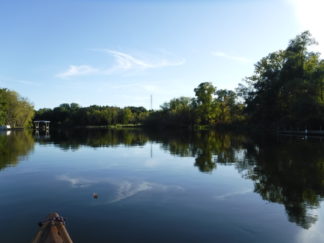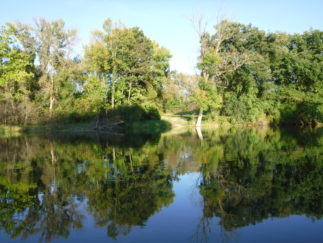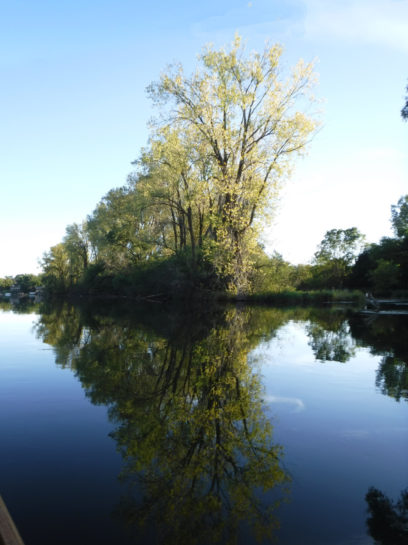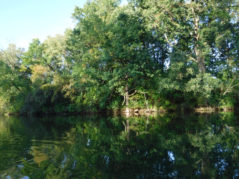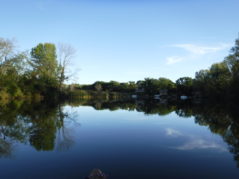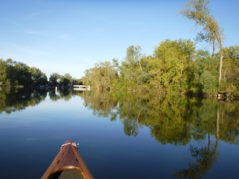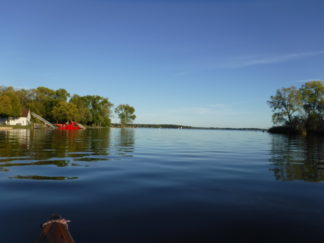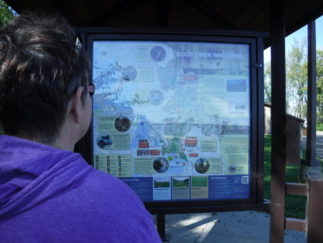We decided to take advantage of a spectacular fall afternoon and explore a nearby section of the Yahara River that we had not tried before. The entire Yahara River from Lake Waubesa to Lake Kegonsa, including Lower Mud Lake, is no-wake. We didn’t come across any boats that were scoffing at the no-wake rule – very relaxing.
Flow: 487 cfs (median ~100 for this date) at gauge 05429500 on Yahara River at McFarland.
Put-in/takeout option #1 – free to paddlers
There were two options as seen on this nice map of the Fish Camp Park. Canoes and kayaks can launch for free at at dock a few hundred yards west of the main boat ramp. One could possibly launch from the bank beside the dock, but there was too much algae and duckweed on the day we were there; so we moved on.
If the situation improves, Fish Camp Park’s has ample parking, as well as a small shore garden with native plants (labeled), and many informational signs in kiosks that tell the interesting story of the fish camp and show maps of the regional watersheds. Restrooms are available down the short walk at option #2. Since we were daunted by the day’s 12-13 mph headwind, we took the opportunity to stall and read more about the history of Fish Camp than we might have.
Put-in option #2: permit-required boat ramp
The big-boat ramp is down the road a bit and has a separate parking area and very easy to use. We found that our state park sticker was not valid at Fish Camp County Park, and the one-day fee for launch access is $7. Various options are available for an annual boat sticker from Dane County. In addition to the nicer-than-expected restrooms with flush toilets, there are two informational in kiosks that tell regarding Door Creek and maps of the regional watersheds.
The Paddle:
Water levels were clearly high, and gauge readings were >90th percentile. Nonetheless, it was possible to paddle upstream fairly easily once the wind subsided. We put in at about 4:00 and turned around at 5:15, having just reached the south edge of Lower Mud Lake, a distance of about 2.5 miles. On the return leg, we passed up the takeout to see if we could find the entrance of Door Creek into Lake Kegonsa, but we didn’t find it quickly and, looking at a map later, it was obvious that it was quite a bit farther from the takeout along the north shore that we thought.
We liked the varied scenery. For much of the trip, there were homes on one side of the river and mostly uninhabited nature preserve on the other side. We tagged this post as urban but it was river homes and cabins.
Around the first bend or two we came across several wood duck boxes and “Do not disturb – wood duck nesting season” signs. No wood ducks were around, however. It’s long past nesting season. Closer to Mud Lake, the banks are mostly cattail marsh. The water is rather clear, and wavy river-bottom vegetation (hopefully native) is visible in shallower areas. We passed under the County Road AB bridge close to the put-in and, farther upstream, under an interesting bridge that looks as though it may have been a railroad bridge, now Dyreson Road (an official Wisconsin Rustic Road #20).
The late afternoon light and glassy water surface as the wind subsided on the return leg made for some nice reflections. Other reports mentioned riffles and boulder gardens, but we didn’t encounter either one. It was just right for us quite water paddlers.
Wildlife: heron, kingfisher, red winged blackbirds, ducks, geese, muskrat, beaver activity, heard an owl, saw cranes in surrounding area
For more about the Yahara chain of lakes and this area see page 35 and forward: Yahara Waterways Water Trail Guide
The history of Fish Camp is riveting and also sad. We took photos of all of the kiosks but the county provides better images in .pdf’s
